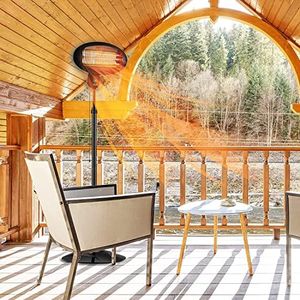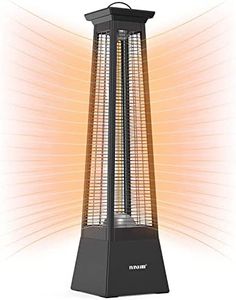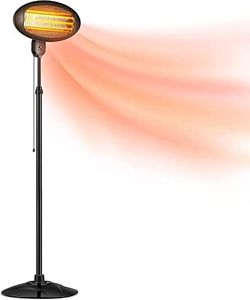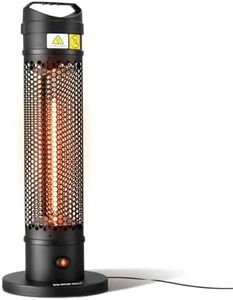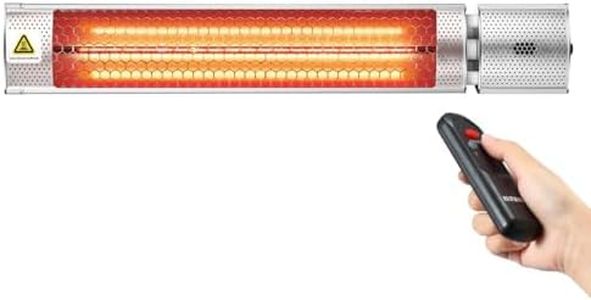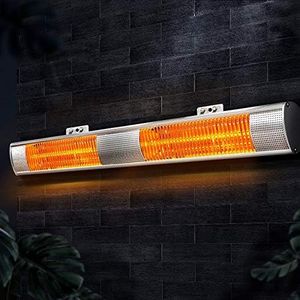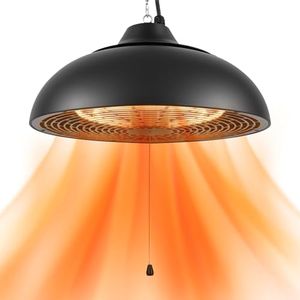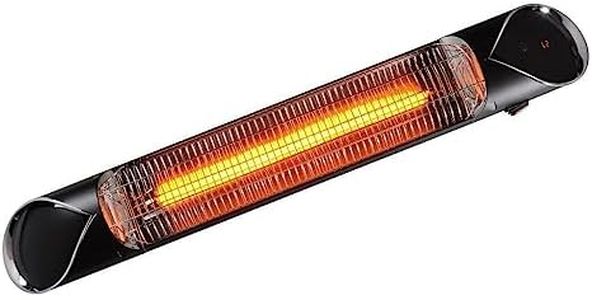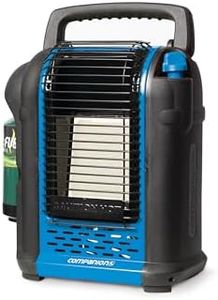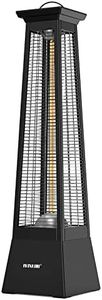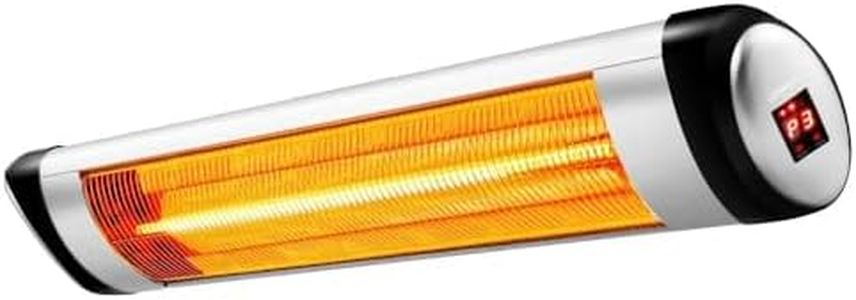We Use CookiesWe use cookies to enhance the security, performance,
functionality and for analytical and promotional activities. By continuing to browse this site you
are agreeing to our privacy policy
10 Best Outdoor Patio Heaters
From leading brands and best sellers available on the web.Buying Guide for the Best Outdoor Patio Heaters
Choosing the right outdoor patio heater is all about creating a comfortable and inviting space for your outdoor gatherings, even when the weather starts to cool. Whether you're looking to entertain friends, enjoy meals on your patio, or simply relax outdoors after sunset, a patio heater can make a big difference. To find the best fit for your needs, it's important to understand the main features and specifications of patio heaters, as each will affect how you experience warmth and convenience outdoors.Heating Power (BTUs)Heating power, typically measured in BTUs (British Thermal Units), tells you how much heat the patio heater can produce. A higher BTU rating means the heater will emit more warmth and can cover a larger area. Patio heaters usually range from around 5,000 to 50,000 BTUs. Lower BTU models suit small, intimate spaces or personal use, while higher BTU units are for larger patios or gatherings. When choosing, think about the size of your outdoor space and how many people you want to keep warm. If you have a compact balcony, a lower BTU heater is sufficient, but for open, spacious patios, you'll want something more powerful.
Fuel TypeOutdoor patio heaters can use different fuel sources, including propane, natural gas, and electricity. Propane heaters are portable and easy to set up since you only need a propane tank, making them ideal for flexibility. Natural gas heaters require a gas line connection, so they tend to be more permanent but offer continuous heat without changing tanks. Electric heaters are usually the easiest to turn on and can be used indoors and outdoors, but they need access to a power outlet and may not cover as large an area. Your fuel choice depends on how and where you plan to use the heater—choose propane for portability, natural gas for a fixed installation, or electric for convenience and indoor/outdoor use.
Heating Coverage AreaHeating coverage area tells you how much space around the heater will feel noticeably warmer. This is typically measured in square feet and can range from about 50 to 200 square feet or more. If you're looking to warm a small dining set, a modest coverage area is fine, but if you want to heat a large patio or seating area, look for models that state a bigger coverage. Always match the coverage rating to the space you want to make comfortable.
Heater Design (Standing, Tabletop, Wall-Mounted, Hanging)The design of the patio heater affects where and how you can use it. Free-standing heaters are tall and usually cover a wide area, great for open spaces. Tabletop heaters are compact and convenient for intimate gatherings, sitting on tables and warming people nearby. Wall-mounted and hanging heaters save space and can target heat to specific areas, perfect for covered patios or balconies. Consider how much space you have and how you plan to arrange your outdoor furniture before selecting a design.
Safety FeaturesSafety features, such as automatic shut-off if the heater tips over, cool-touch exteriors, or protective grilles, are crucial for worry-free operation, especially in spaces where children or pets play. Some heaters have sensors that shut them off if they're knocked over or if oxygen levels drop (for gas models). If safety is a top concern or your outdoor space sees a lot of traffic, prioritize models with strong safety features.
Weather ResistanceBecause patio heaters are used outdoors, they need to withstand rain, wind, and sometimes snow. Weather resistance refers to how well the heater can handle these elements, often indicated by water-resistance ratings or rust-proof materials like stainless steel or powder-coated aluminum. If you plan to leave your heater outside year-round, look for durable, weather-resistant models to ensure longevity and safe operation.
Ease of Operation and MaintenanceHow easy a heater is to turn on, adjust, move, and clean will affect your overall experience. Some models offer push-button ignition, adjustable heat controls, and wheels for easy moving, while others may require more effort. Think about how often you'll use the heater and whether you'll need to move it around or perform regular maintenance like cleaning or refueling.

